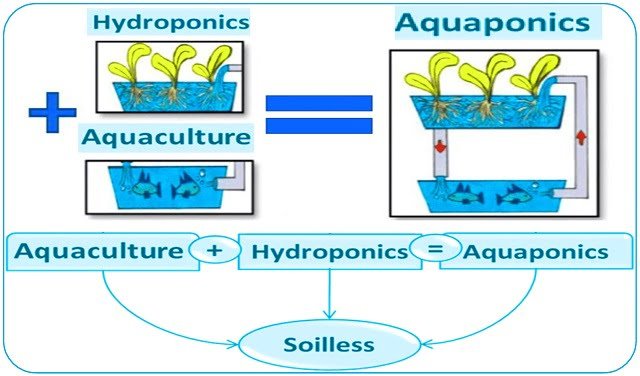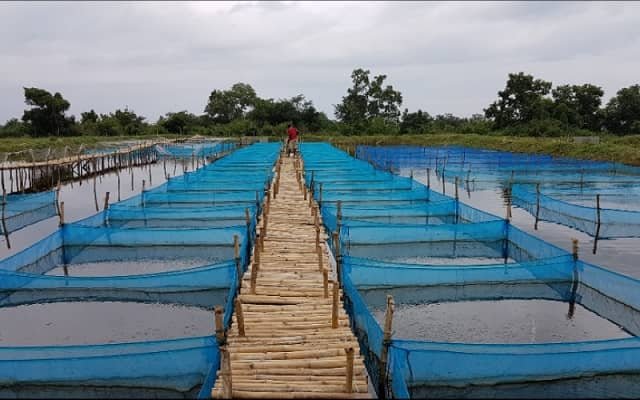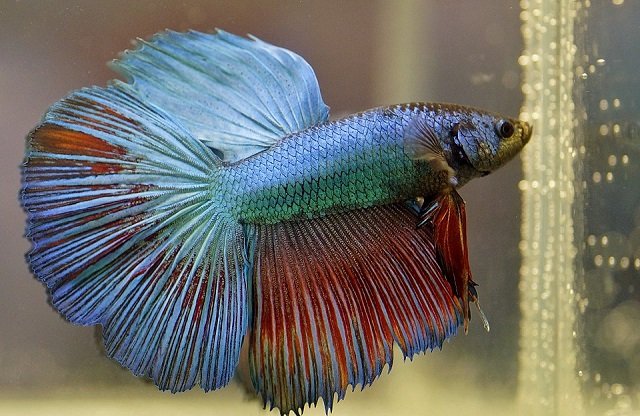
Associated aquaculture, an ancient practice that combines rice and fish cultivation within the same ecosystem, has proven to be much more than just a food production technique. A recent study conducted in Sichuan Province, China, has revealed the surprising benefits of this ancestral practice for the health and nutrition of carp, a fish species highly valued in global cuisine.
Researchers from the Sichuan Academy of Agricultural Sciences and the Fish Resources and Environment in the Upper Reaches of the Yangtze River Observation and Research Station in Sichuan Province evaluated variations in digestive enzymes, antioxidant properties, glucose metabolism, and nutritional content in “carp” Carassius auratus raised in rice paddies and ponds.
Rice-Fish Cultivation System
The rice-fish cultivation system, an ancient and sustainable aquaculture model, has been a cornerstone of Chinese agricultural practices for over 1200 years. This integrated approach to farming not only optimizes the use of land and aquatic resources but also enhances biodiversity and ecological balance.
The practice has shown that various economically viable aquatic animals, such as fish, crabs, crayfish, and turtles, are suitable for the rice cultivation system. However, few studies have explored the effects of the rice-fish cultivation system on the antioxidant system of the liver, nutrient metabolic systems, and the nutritional quality of carp muscle in Carassius auratus.
What Does Science Say?
Chinese researchers have deeply analyzed carp raised in rice paddies and compared them with those raised in traditional ponds. The results are revealing:
- Greater Antioxidant Capacity: Carp raised in rice paddies showed significantly higher levels of antioxidants, substances that protect cells from damage caused by free radicals. This translates into greater disease resistance and a stronger immune system.
- Optimized Glucose Metabolism: The study also revealed that the glucose metabolism in rice paddy carp was more efficient, suggesting better nutrient utilization and increased energy.
- Higher Nutrient Content: The muscles of carp raised in rice paddies contained higher levels of essential nutrients, such as proteins and omega-3 fatty acids, known for their cardiovascular health benefits.
In summary, fish raised in rice paddies exhibited better digestive capacity, higher antioxidant activity in the liver, more efficient glucose metabolism, and improved muscle nutritional composition, with higher protein and amino acid content and lower fat, compared to fish raised in ponds.
How Can This Be Explained?
The results of the study on Carassius auratus cultivation in rice paddies (PA) versus ponds (PO) can be explained by a number of factors related to environmental and dietary differences between the two cultivation systems. Here are the key explanations:
Stay Always Informed
Join our communities to instantly receive the most important news, reports, and analysis from the aquaculture industry.
- The higher amylase and trypsin activity in the PA group fish suggests a better ability to digest carbohydrates and proteins. This could be due to the diversity of food sources in rice paddies, including insects, grasses, and rice pollen. The natural and varied diet in the paddies promotes gut health and nutrient absorption.
- The higher catalase (CAT) activity in the liver of PA group fish indicates better defense against oxidative stress. Rice paddies, being more biodiverse environments, offer more stable and healthy living conditions for the fish, reducing stress and enhancing antioxidant enzyme activity.
- The higher crude protein and ash content in PA group fish, along with lower fat levels, indicates better meat quality. This may result from the more varied and natural diet in the rice paddies, as well as the increased physical activity of the fish in these environments.
Benefits for Fish Farmers
The main implications for fish farmers, based on the study of Carassius auratus cultivation in rice paddies versus ponds, are as follows:
- Improved Product Quality: The study showed that fish raised in rice paddies (PA) have better nutritional quality compared to pond-raised fish (PO). This is reflected in higher crude protein content, crude ash, and essential and non-essential amino acids, as well as lower fat content. This suggests that fish farmers adopting the rice-fish system could offer the market a product with higher nutritional value and potentially more appealing to consumers.
- Optimized Digestion and Metabolism: Fish raised in rice paddies showed greater digestive enzyme activity, such as amylase and trypsin, suggesting better carbohydrate and protein digestion. Additionally, their glucose metabolism was more efficient, as evidenced by elevated enzyme activities like NKA, HK, GK, G6Pase, and G6PDH. This indicates that the fish in rice paddies make better use of their diet’s nutrients, which could result in more efficient growth and reduced need for supplementary feeding.
- Strengthened Antioxidant System: The study revealed that rice paddy fish have greater catalase (CAT) enzyme activity in the liver, indicating better ability to combat oxidative stress. This suggests that fish raised in rice paddies are healthier and more disease-resistant, potentially reducing losses and costs associated with treatments and mortality.
- Sustainability and Biodiversity: The rice-fish cultivation system is a traditional agricultural practice that promotes biodiversity and ecological balance. By integrating rice and fish production, it optimizes land and water use, reducing the negative environmental impact associated with intensive aquaculture. This means that fish farmers can adopt a more sustainable production model, which is beneficial for the environment and could enhance the product’s image with consumers.
- Reduced Feed Costs: Rice paddies offer a wider variety of food sources for the fish, including insects, grasses, and rice pollen. This natural diet could reduce dependence on commercial feed, lowering operational costs for fish farming. This is especially relevant in areas where access to commercial feeds is limited or expensive.
- Improved Fish Welfare: The environment of rice paddies, with greater biodiversity and a more natural setting, offers healthier living conditions for the fish, allowing them to express more natural swimming and feeding behaviors. This not only contributes to animal welfare but can also positively impact the quality of the final product.
- Potential for Income Diversification: By adopting the rice-fish cultivation system, farmers can diversify their income sources, benefiting from both rice and fish production. This increases the economic resilience of agricultural communities and contributes to food security.
Conclusion
The study highlights that the rice-fish cultivation system offers significant advantages for fish farmers, such as improved product quality, optimized digestion and metabolism, strengthened antioxidant defenses, greater sustainability, reduced costs, and income diversification. These implications suggest that this cultivation system represents a viable and attractive alternative to traditional pond-based aquaculture, with potential to enhance productivity, sustainability, and profitability in fish farming.
Reference (open access):
Yan, T., Xie, Y.-Y., Zhou, B., Kuang, X., Li, Q.-Z., Zhao, F.-Q., Li, Q.-D., & He, B. (2024). Rice-Fish Farming Improved Antioxidant Defences, Glucose Metabolism, and Muscle Nutrient of Carassius auratus in Sichuan Province. Metabolites, 14(12), 710.
Editor at the digital magazine AquaHoy. He holds a degree in Aquaculture Biology from the National University of Santa (UNS) and a Master’s degree in Science and Innovation Management from the Polytechnic University of Valencia, with postgraduate diplomas in Business Innovation and Innovation Management. He possesses extensive experience in the aquaculture and fisheries sector, having led the Fisheries Innovation Unit of the National Program for Innovation in Fisheries and Aquaculture (PNIPA). He has served as a senior consultant in technology watch, an innovation project formulator and advisor, and a lecturer at UNS. He is a member of the Peruvian College of Biologists and was recognized by the World Aquaculture Society (WAS) in 2016 for his contribution to aquaculture.




